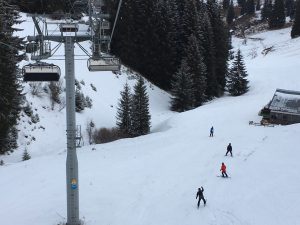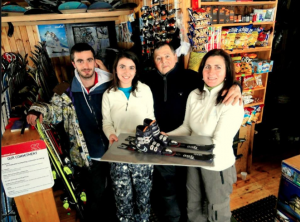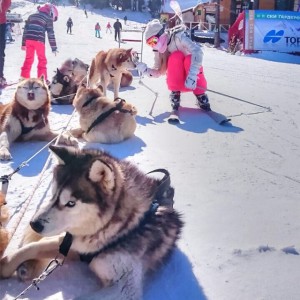Skiing in Pamporovo!
I am not a skier. Well, at least I don’t think I am. You see, I have never skied in my life! I have never even put on a pair skis!! And it was only just last year that I even rode a lift to the top of a mountain. It was amazing.
I want to ski. I am open to it. I’m just not sure about learning to ski. But I have had lot of encouragement to give it a try. So I did what most of us do when exploring new things…
 …turns out, when you Google ‘important things to know before you start skiing’ the advice is endless! I spent the better part of a day ploughing through (see what I did there?) all the blogs on offer, taking notes and preparing a spread sheet to work out what points they had in common. Yeah. Okay. Maybe I took it too far. It was a slippery slope. Literally. But you get the idea. So here’s what I took away as being the most important things to know about skiing before you strap on the ski boots:
…turns out, when you Google ‘important things to know before you start skiing’ the advice is endless! I spent the better part of a day ploughing through (see what I did there?) all the blogs on offer, taking notes and preparing a spread sheet to work out what points they had in common. Yeah. Okay. Maybe I took it too far. It was a slippery slope. Literally. But you get the idea. So here’s what I took away as being the most important things to know about skiing before you strap on the ski boots:
Location. Location. Location.
Choose a resort that has plenty of interesting beginner runs (in Europe, these are the green or blue ones). Also, if you prefer a moderate climate, resorts situated at or below the tree-line are best. Pamporovo Ski Resort in the Rhodopi Mountains not only has some lovely beginner pistes but is also at the tree-line. The down-side to this is that there may be times when the snow is not at its best. The best time to ski at the tree-line level in Europe is mid December to the end of March. If you don’t mind very cold temperatures, the snow conditions are better for longer at resorts above the tree-line.
It is also worth mentioning here that choosing comfortable accommodation was a top tip on a couple of blogs I read. A cosy place to come back to after a day of skiing and an evening of partying is an important element for a relaxing ski holiday. Stoikite House, nestled in the quiet village of Stoykite is about a 15 minute drive to the centre of Pamporovo and a short walk to Lift No. 6 (slopes 12 and 12A-blue runs).
Be prepared.
Get the most out of learning to ski by making sure you have all the right equipment. In all the articles I have read, it was recommended that you hire your skis (including bindings), and boots first. Buying skis and boots can be expensive and if you discover that skiing isn’t for you, hiring will save you time having to sell your kit on eBay. It is really important that your boots fit well. They should be snug but not pinching. They will feel stiff and awkward but they shouldn’t hurt. Go back and get a better fitting pair if after a while you find they are ill-fitting.
Of course, you will need to purchase some things like a woollen hat, ski pants and jacket, goggles, waterproof gloves/mittens, scarf, socks (designed especially 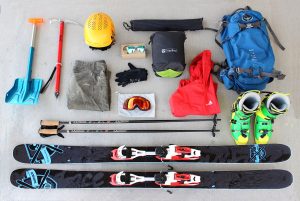 for skiing) and thermal underwear. Don’t forget to pack your helmet. And sun cream (it’s not just for sailing or beach holidays)! A sunburned face can be very uncomfortable when you are finished skiing for the day and painful the next day when you put your goggles back on! One last thing: You may get quite hot when skiing so consider the temperature before deciding if you need the thermals.
for skiing) and thermal underwear. Don’t forget to pack your helmet. And sun cream (it’s not just for sailing or beach holidays)! A sunburned face can be very uncomfortable when you are finished skiing for the day and painful the next day when you put your goggles back on! One last thing: You may get quite hot when skiing so consider the temperature before deciding if you need the thermals.
Practice makes perfect.
You will need lessons if you stand any chance of actually enjoying yourself on the slopes. Private tutoring is expensive but group lessons are affordable and fun! Avoid taking lessons from friends or family members. Bad habits can be passed on and if you don’t catch on quick enough, lack of patience may test the relationship!
Now you’re up and running!
Well, sort of. You will fall down. A lot. In fact, 8 times a day is the average. Apparently, falling doesn’t hurt as much as you think it will. Chances are your ego will be injured more than your body. So lighten up. Smile. Have some fun 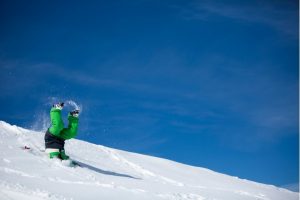 with it. Laugh at yourself a little. With a bit of practice, you will get the hang of it and begin to fall over less and less. Stay with it and before long you will be off! Imagine the sense of accomplishment when, after much practice, returning year after year, you gain more confidence and ability. Soon you will be attempting more challenging (black) runs. You might be a bit sore initially, but the end result is that you will be getting fitter.
with it. Laugh at yourself a little. With a bit of practice, you will get the hang of it and begin to fall over less and less. Stay with it and before long you will be off! Imagine the sense of accomplishment when, after much practice, returning year after year, you gain more confidence and ability. Soon you will be attempting more challenging (black) runs. You might be a bit sore initially, but the end result is that you will be getting fitter.
 In fact, you may wish to start a light exercise routine including squats, lunges, stretches and some cardio a few months before your trip. You will be less tired and sore and have more energy for the best part of the day: APRES SKI!!!
In fact, you may wish to start a light exercise routine including squats, lunges, stretches and some cardio a few months before your trip. You will be less tired and sore and have more energy for the best part of the day: APRES SKI!!!
Safety First.
Getting hurt on holiday can be disastrous. Be safe. Ski with a buddy. Never alone. Only ski to your ability. Don’t be tempted or pressured to attempt runs above your ability. Take it slow and easy, mastering each level before taking on a new challenge.
Ski Holidays are not just for skiing.
If you find that when you get there, you are not feeling as adventurous as you thought you would, all is not lost! You don’t have to ski to have a fantastic ski holiday. There are usually plenty of non-ski activities to choose from and you can create your own. So no matter how you decide to fill your days and nights on your ski holiday, you are sure to make great memories and have a blast!


